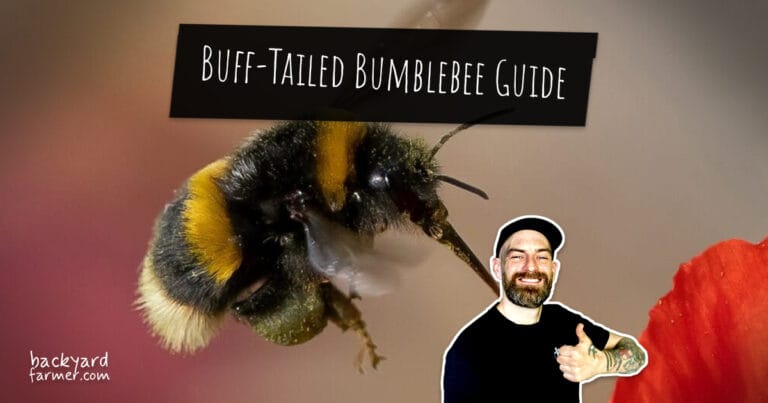Table of contents
Introduction
The Buff-tailed Bumblebee (Bombus terrestris) is one of the earliest British bumble bees to appear in spring, making it a key pollinator for a wide range of plants in the UK.
With its large size, distinctive low-pitched buzz, and pale buff-coloured tail, this native pollinator is easy to spot in gardens, parks, and farmland. It plays a crucial role in maintaining biodiversity by pollinating wildflowers, fruit trees, and crops.
Unfortunately, habitat loss and climate change are putting pressure on its populations. In this guide, you’ll learn how to identify the Buff-tailed Bumblebee, tell it apart from similar species like the White-tailed Bumblebee, and discover practical ways to support its survival.
How to Identify a Buff-tailed Bumblebee
The Buff-tailed Bumblebee is easy to recognise thanks to its sturdy body, two wide yellow bands, and buff-coloured tail. Queens are noticeably larger and darker than workers and males.
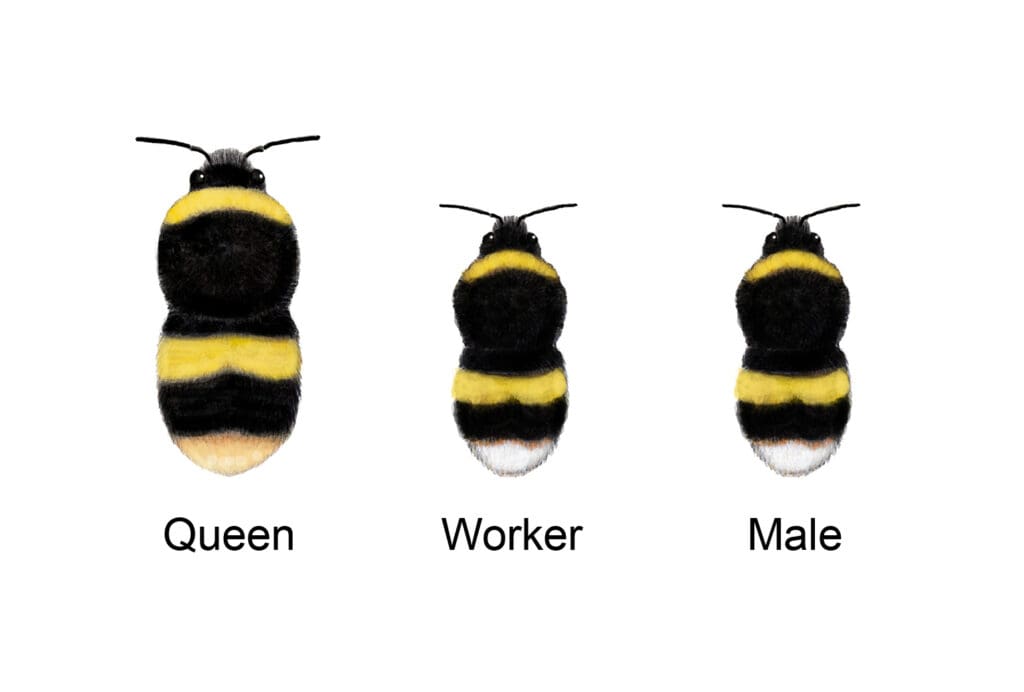
Physical Characteristics
- Queen – Large and robust, with a dull buff tail and two golden-yellow bands (one behind the head, one mid-abdomen)
- Worker – Smaller than the queen, with a paler or whiter tail
- Male (Drone) – Slender, with a golden tone and pale yellow hairs on the face
Looking for more on UK bumblebee identification? Explore our full British bumble bees guide.
Identification & Key Facts
| Attribute | Details |
|---|---|
| Common Name | Buff-tailed Bumblebee |
| Latin Name | Bombus terrestris |
| Size | Queens: 20–25mm, Workers: 11–17mm, Males: 14–16mm |
| Location | Widespread across the UK, especially in southern and central areas |
| Active Months | February to October (queens may appear in winter) |
| Habitat | Gardens, farmland, parks, and woodland edges |
| Nesting Behavior | Typically nests underground in old rodent burrows |
| Social Behavior | Social, forming large colonies |
| Flora & Fauna | Favourites include crocuses, lavender, bramble, foxgloves, and heather |
| UK Status | Common |
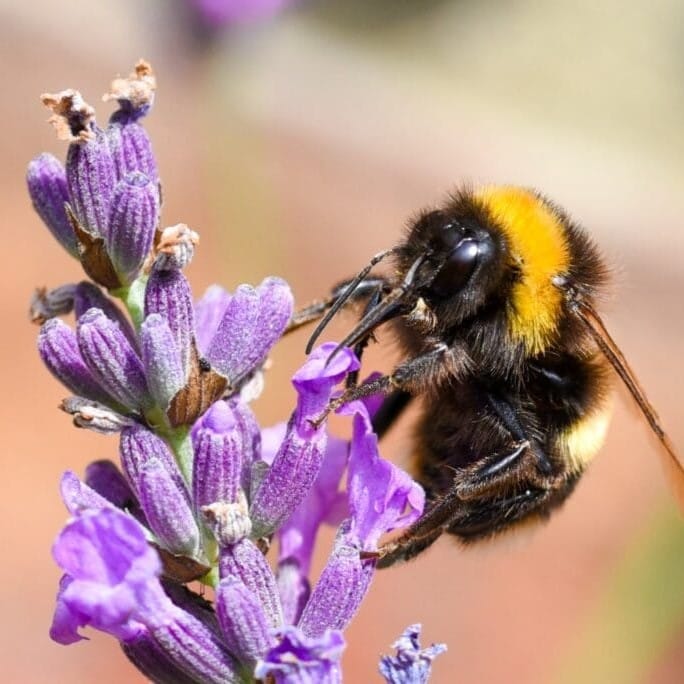
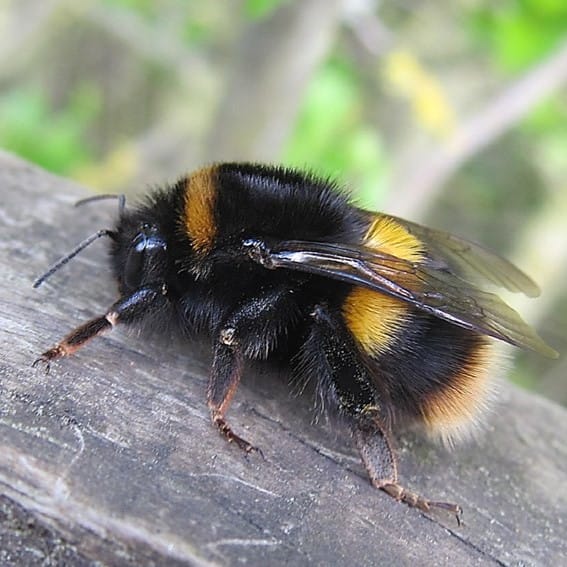
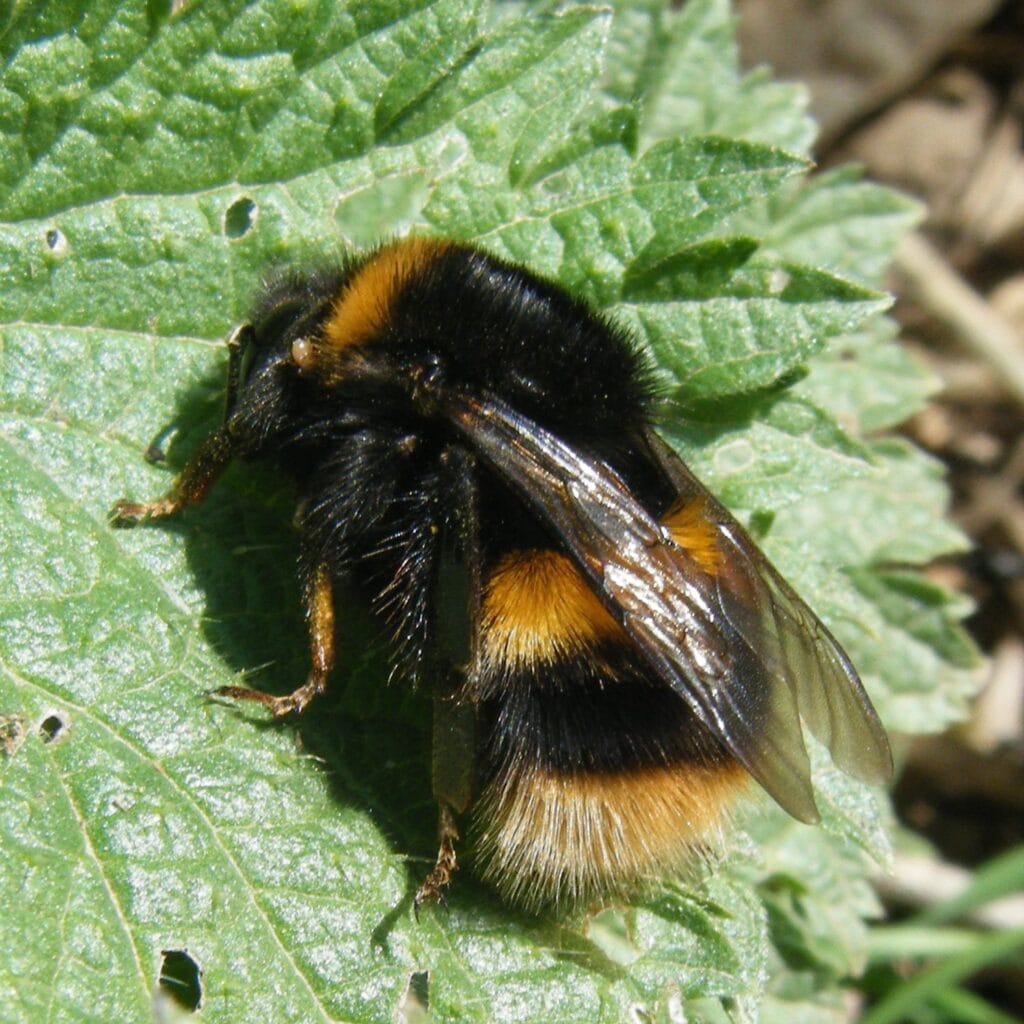
Similar Species
Many people often confuse the Buff-tailed Bumblebee with other bumblebee species because of its similar markings. Here’s how to tell them apart:
- White-tailed Bumblebee (Bombus lucorum) – Features a bright white tail and more vivid yellow bands
- Garden Bumblebee (Bombus hortorum) – Slimmer, with a noticeably longer face and tongue
- Early Bumblebee (Bombus pratorum) – Smaller overall and has an orange-tinged tail
Want more tips? Explore our comprehensive Bee Identification Guide.
Why the Buff-tailed Bumblebee Matters
This common UK bumblebee isn’t just a springtime visitor—it’s a vital part of our ecosystem. By pollinating wildflowers and crops, it helps sustain natural biodiversity and supports food security. Sadly, changing climates and habitat destruction continue to threaten Bombus terrestris.
Frequently Asked Questions (FAQ)
The scientific name is Bombus terrestris.
It’s widespread across the UK, particularly in southern and central regions, and can often be spotted in gardens, parks, farmland, and woodland edges.
Look for its buff-coloured tail and two yellow bands. It’s often mistaken for the White-tailed Bumblebee, which has a pure white tail and brighter yellow bands.
It’s active from February to October. Queens may be seen even in winter during mild spells.
They feed on nectar from flowers like crocuses, bramble, foxgloves, lavender, and heather.
Absolutely. They play a key role in pollinating wild plants and food crops, helping to maintain ecosystems and support biodiversity.
Plant bee-friendly flowers, avoid harmful pesticides, and create safe nesting spaces in your garden or outdoor space.
How You Can Help
Protecting Bombus terrestris helps preserve pollinator populations across Britain. Here’s how you can make a real impact:
Plant Bee-Friendly Flowers
- Attract pollinators like the Buff-tailed Bumblebee with crocuses, lavender, foxgloves, bramble, heather, comfrey, and fruit blossoms.
Avoid Harmful Pesticides
- Avoid neonicotinoids, glyphosate, and broad-spectrum insecticides that harm bumblebee species.
Provide Nesting Spaces
- Create bumblebee nesting areas by leaving wild patches, keeping old burrows intact, and installing bee boxes in quiet corners.
For extra inspiration, check out WWF’s guide to creating a bee-friendly garden.
By adopting pollinator-friendly gardening techniques, you’ll not only support Bombus terrestris—but also help other orange bumble bee UK species thrive.
